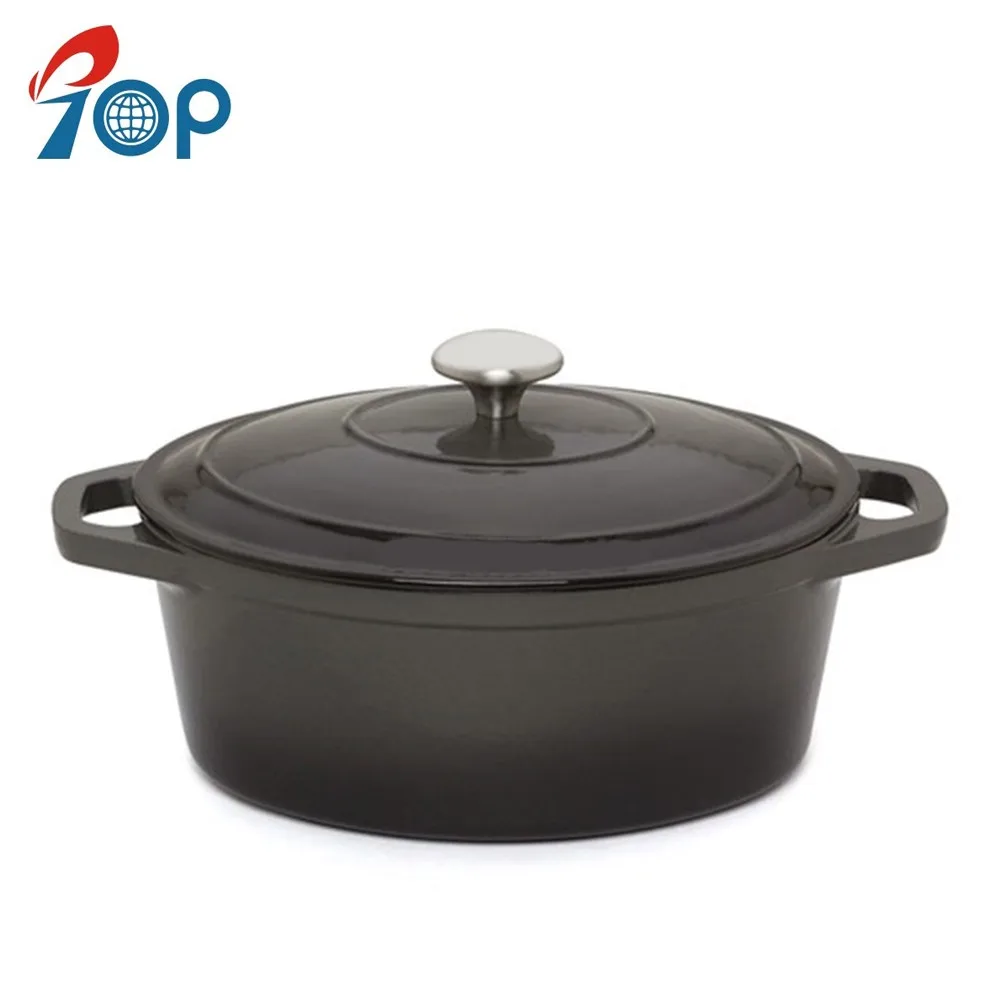

This is primarily because those areas are the most damage-prone were they to be enamel coated. You may have noticed that the top rims, the edges of lids, and sometimes the bottoms of enameled cast iron pots and pans appear to be bare iron. In today's market, the lion's share of quality enameled cast iron, both vintage and modern, comes from European sources. cast iron manufacturer, Lodge, currently offers an ECI line, it is made in China. And, although the last remaining major U.S. None of the American-made enameled iron, including that of Griswold, which spanned the better part of the mid-20th century, appeared to survive much past the 1960s, likely victims of the upswing in popularity around that time of newer, more modern forms of cookware other than cast iron. In some cases, the enameling was done by a third party, who either acted as agent for the manufacturer or who simply obtained pieces and enameled them to be marketed under their own brand. Quality appeared to vary from as little as a single, colored coat of paint to a heavy, two-tone vitreous enameled finish. On the upside, ECI is acceptable for refrigerated food storage, a function not feasible with bare iron.Įnameled finishes are seen on cast iron made by the major American manufacturers included Griswold, Wagner, Favorite, Lodge, Birmingham Stove & Range Co, Vollrath, and others. The finish may also craze, fracture, and flake off of pieces that are improperly overheated or subjected to thermal shock. Burnt-on foods are often difficult to deal with. The downside of enameled cast iron is its propensity to stain and chip. As with plating, the costly enameling process also elevated the lowly cast iron pot to luxury status. Along with designs devised to allow pots to perform double duty as serving pieces, enameled cast iron would become a utensil of choice for those who could afford it. If pieces were porcelainized both inside and out, there was no need for seasoning, and acid reactivity was eliminated.

In the 1920s, vitreous enamel coating came into vogue, adding the variety of color to the mix. Ironically, plated pieces typically hold lower value as collectibles than bare iron, as they are often worn and not cost-effective to refurbish. According to an old 1918 Griswold catalog, nickel plating doubled the price charged per skillet. Plating gave a more upscale appearance to cast iron. To address that issue, pieces were also offered in nickel or chrome-plated versions.

American foundries, as early as the 1890s, realized there was a particular consumer who desired the attributes cast iron cookware is famous for, but didn't care for its rustic look. For many this is unacceptable for those afflicted with hemochromatosis, potentially health-threatening.Īnother shortcoming of cast iron, if one can call it that, is its appearance. Acidic ingredients, like tomatoes, vinegar, and wine, however, can have the effect of leaching excessive amounts of iron into the food. It has long been understood that eating foods cooked in cast iron may contribute to one's dietary iron intake. Unless a cast iron pot or pan is extremely well-seasoned, there exists a possibility for the metal to be reactive to the foods cooked in it. As versatile as cast iron cookware can be, there are some areas where it comes up a little short.


 0 kommentar(er)
0 kommentar(er)
